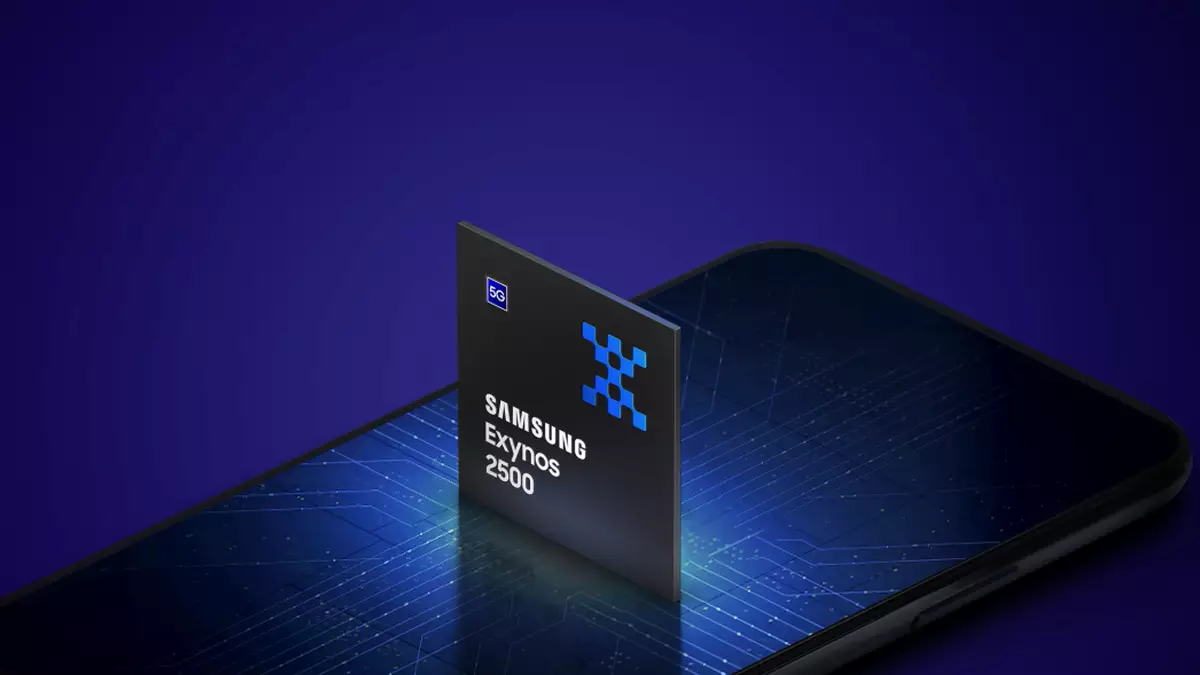Samsung has recently introduced its Exynos 2500 chipset, marking a pivotal moment in mobile technology with its development on cutting-edge 3nm process technology. This launcher promises not just minor enhancements, but a significant leap forward in CPU performance and artificial intelligence capabilities, boasting claims of up to a 15% boost in CPU speed and a striking 39% increase in AI processing. These figures are evidently intended to position Samsung as a formidable player in the competitive semiconductor landscape.
However, one must question the relevance of such improvements in real-world performance. While numbers impress analysts and tech enthusiasts alike, they often don’t translate into tangible benefits for the average consumer. In a world saturated with smartphones, will the Exynos 2500’s incremental advances truly entice users away from competitors? The larger narrative that Samsung must grapple with is the perception of innovation—can a new chip architecture connect with the desires and needs of users who are largely indifferent to the technical specifications?
Connectively Shifting Landscape
One standout feature of the Exynos 2500 is its support for direct connectivity with Low Earth orbit satellites, enabling emergency calls and texts. This innovation unveils an opportunity for Samsung to frame itself as a brand that values consumer safety and resilience in an increasingly unpredictable world. However, it’s worth noting that while the satellite service might seem visionary, the practicality and accessibility of this technology still remain to be seen. Will users actually make calls via satellite, or is this feature merely a marketing gimmick?
Furthermore, the Exynos 2500 supports a staggering potential for camera technology, accommodating sensors up to 320 megapixels. This sensational capability can appeal to users passionate about photography, yet it also raises questions regarding the necessity of such high-resolution imagery in everyday life. The focus should pivot from merely pushing boundaries of hardware to ensuring consumers utilize these capabilities in meaningful ways.
Gaming and Graphics: The New Standard?
In the era of mobile gaming, a standout element of the Exynos 2500 is its integration of the Xclipse 950 GPU, based on AMD’s RDNA 3 architecture. With claims of delivering frame rates that are 28% faster and the support for hardware-accelerated ray tracing, Samsung aims to position itself at the forefront of smartphone gaming. This could potentially revitalize their brand appeal among gamers who typically gravitate toward devices that enhance their interactive experiences.
However, we must evaluate whether these hardware enhancements directly influence overall gaming experiences. The gaming populace increasingly demands robust ecosystems that not only deliver on performance but also aesthetics and usability. For Samsung, this means forging partnerships with game developers and integrating better software support to harness the full potential of the Exynos 2500.
Future Prospects: A Strong Foundation? Or an Overhyped Release?
As Samsung gears up for the anticipated launch of the Galaxy Z Flip 7, carrying with it the Exynos 2500, the tech giant finds itself at an intriguing crossroads. With competitors breathing down its neck, Samsung must ensure that this chipset isn’t just a fleeting talking point but rather the cornerstone of a broader strategic vision aimed at enhancing user experience.
Moreover, the broaching promise of features like 5G support and advanced connectivity highlights a pressing industry trend, yet Samsung must zealously prepare for the expected saturation of similar offerings across manufacturers. The digital consumer is getting smarter, and simple specs may not cut it anymore. The future rests on a company-wide commitment to translating these advancements into enriched and intuitive consumer interactions with technology.
In this evolving ecosystem, the ultimate question endures: will the Exynos 2500 drive Samsung to the forefront of innovation, or will it slide into the obscurity of overhyped tech that fails to resonate beyond the initial launch buzz? As it stands, the stakes are high, and the industry is anxiously awaiting an answer.

Leave a Reply